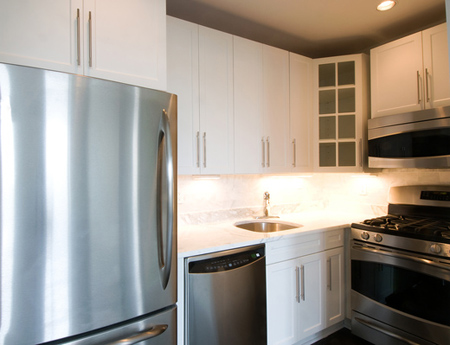
Kermit the Frog sang, “It isn’t easy being green,” but for the environmentally-minded who are shopping for homeowners insurance, being green is getting less difficult. Contrary to what some might think, there may also be a financial bonus to going green, as it often results in energy savings and in some areas, tax savings as well.
Though still not commonplace, more and more people are asking about upgrading their homes to green standards, according to Christian Carter of the Westhampton Agency, Inc., an insurance company affiliate of CBS Coverage Group, Inc. Mr. Carter added that owners of green-certified homes can usually benefit from lower premiums on their property.
“It’s not very widespread as of yet, but it is an issue,” he said during a recent interview. He added that those who wish to make their home greener in the future can also choose coverage that, in the event of a loss, will pay for rebuilding their home with a growing list of environmentally-friendly products.
A number of variables come into play for those who are exploring going green—fuel availability, heating and cooling loads, utility rates, rebates and tax incentives—which can make it difficult to identify the solution that will deliver the greatest return on investment.
Green homeowner coverage is a new form of insurance offering that has a lot of excitement and consumer interest around it as homeowners increasingly want to know how they can help themselves while helping the environment. More and more insurance companies are now playing a role in this issue and are in fact encouraging consumers to go green, according to Mr. Carter.
There are basically two types of green homeowner policies. The first type of coverage is for buildings that already meet specific efficiency and sustainability standards, while the second type provides the choice to replace any losses incurred on the property with more environmentally-friendly materials.
Green insurance coverage has a lot of applications, from energy-saving appliances to home-building products and furnishings made from recycled materials, to name just a few. Even strategically planting trees to provide cooling shade and a natural barrier for wind protection can lead to insurance cost breaks.
Choosing to green one’s personal residence can be applied to lighting, heating and cooling, as well as less obvious areas such as buying new rugs made from natural or recycled fibers. A homeowner with a claim who chooses to upgrade an old rug made from formaldehyde-based material that was destroyed to one of like kind and quality but made from a natural or recycled material may qualify for a green upgrade.
Many expect the green trend in insurance to grow and become permanent and more widespread as numerous carriers will now adjust losses when a client upgrades to a higher-efficiency appliance. The insurance company will then pay the difference after subtracting the deductible and depreciation.
Alternative-energy installations such as solar heating systems also qualify under the new green coverage. Under the new policy offerings, if a home is totally destroyed, it can be rebuilt completely to green standards. And some carriers, such as Fireman’s Fund, are offering discounts to homeowners whose residences are already green.
The Fireman’s Fund’s green upgrade, which pays for a greener rebuild after a loss, is offered in addition to its regular homeowners policy and starts at $25 (on top of the policy fee) annually for homes with an insured value of $350,000 or less. For houses with higher insured values, the annual additional cost is $70 per $1 million of the home’s value.
AIG, Lexington Insurance Company and Lloyds of London are other insurance carriers developing plans in this arena.
Many insurance carriers will now adjust any loss if a homeowner upgrades to a higher efficiency Energy-Star appliance, less the deductible and depreciation after sending in the receipt for the new appliance. These carriers, in the end, will pay the difference, which can easily apply to items like refrigerators, dishwashers and water heaters.
However, not all green upgrade programs are available in each state. The best bet is to check with your agent, and keep checking over time as the green movement continues to build steam.
Joseph Finora Jr. is a freelance writer in Laurel. Contact him at jfinora@optonline.net.